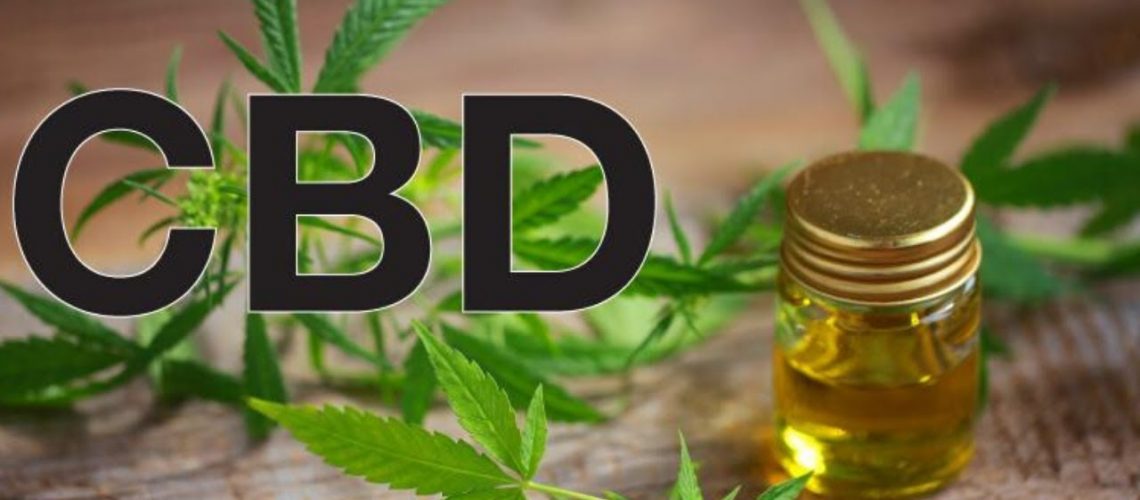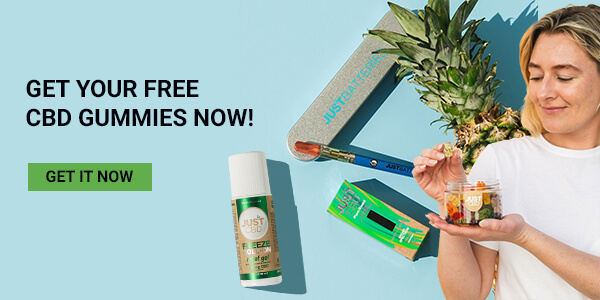If you’re new to CBD, or just thinking of taking it for the first time, there are a lot of things you should know about Cannabidiol. From where CBD comes from to what the effects of CBD are, it’s important you have an understanding of what CBD is and how it can affect you. Here are 11 important facts about CBD that you should know before taking it.
CBD is a natural compound that comes from the Cannabis Sativa plant.
CBD, or Cannabidiol, is a natural compound that comes from the Cannabis sativa plant. While marijuana also comes from the same species of plant, CBD and marijuana are not the same compounds. CBD is extracted from the buds, leaves, and stems of Cannabis Sativa plants that contain 0.3% or less THC. These low or no THC Cannabis Sativa plants are also called hemp.
CBD offers a number of potential health benefits.
CBD has a wide range of potential health benefits. Some conditions that CBD may be able to help with include minor aches and pains, stress or anxiety, trouble sleeping at night, and more. CBD is generally well-tolerated and has a good safety profile. In its pure form, cannabidiol has no abuse or dependence potential. However, it is always best to consult your doctor before starting any new supplement regimen – especially if you’re currently taking any prescribed pharmaceutical drugs or medications.
CBD works by interacting with your body’s Endocannibinoid System (ECS)
The endocannabinoid system (ECS) is a biological system that regulates a variety of physiological processes in your body. It is responsible for managing mood, memory, fertility, appetite, hormones, pain response, and more. The ECS creates balance within the body, and CBD interacts with this system.
CBD interacts with your ECS by interacting with endocannabinoids. Endocannabinoids are neurotransmitters that activate the cannabinoid receptors of the ECS. When CBD activates these receptors, it triggers reactions within the system to help bring balance back to the body
There are some potential side effects when taking CBD.
When taking CBD, there is a risk for some side effects. The most common side effect to taking CBD is drowsiness (which may be a good thing if you’re using CBD as a sleep aid.) In addition, CBD can interact with other medications to cause other side effects. If you are taking prescription drugs and supplements, you should let your doctor know before starting to take CBD.
Other reported side effects of CBD include :
Dry Mouth
CBD causes the body to produce more saliva, which can cause dryness in the mouth. This side effect is temporary.
Changes in Appetite
CBD can also cause changes in appetite. Some users have reported a temporary change in appetite when taking CBD. However, some report an increase in their appetite, while others have reported a loss of appetite.
There are 3 main types of CBD (Cannabidiol) – Full-spectrum, Broad-Spectrum, and Isolate
When it comes to CBD, there are three main types: Full-spectrum, Broad-Spectrum, and Isolate. Here’s a quick breakdown of the different CBD spectrums:
Full-Spectrum
Full-spectrum CBD products contain all of the beneficial cannabinoids and terpenes found in the hemp plant. What’s important to note is that when cannabinoids are combined, they produce their maximum effects – this is known as the entourage effect. And because our bodies respond to cannabinoids (THC and CBD), it’s essential to know how each one works.
Full-spectrum CBD products usually have trace amounts of THC.
Broad-Spectrum
Broad-spectrum CBD is very similar to Full-Spectrum CBD with the exception that it does not contain any THC. It’s a great option for people who are sensitive to even small amounts of THC or are concerned about drug test results.
Isolate
CBD Isolate is simply pure CBD. No other cannabinoids or terpenes are present. There is no THC in CBD Isolate.
CBD is not the same as THC
While CBD and THC are both cannabinoids, and both come from the Cannabis Sativa plant, they are very different compounds. Additionally, they have different effects on the body. CBD does not cause any psychoactive effects or cause a “high” feeling like THC does. Legalized CBD must be derived from hemp plants – Cannabis Sativa plants containing less than 0.3% THC content.
CBD can’t get you high, but CBD products could have THC
Many people are drawn to CBD products because they contain cannabidiol (CBD), a compound that does not produce the psychoactive effects associated with tetrahydrocannabinol (THC). However, it’s important to note that in some states, CBD can be derived from either marijuana or hemp.
Full-spectrum CBD products may have trace amounts of THC. However for the product to be legal, it must still contain less than 0.3% THC.
Hemp-derived CBD is legal under federal law in the United States, whereas CBD derived from marijuana is a Schedule 1 drug and therefore federally illegal. This means that while hemp-derived CBD should have little to no THC, CBD from other Cannabis Sativa or marijuana plants could potentially contain THC and thus violate federal law. It’s important to check the label of the product you are considering, as well as to verify the Certificate of Analysis, to confirm the amount of THC in your CBD product.
The right CBD dosage to take varies by person and is influenced by age, weight, etc.
Another important fact about CBD to remember is that, when it comes to CBD, the dosage that’s right for you depends on a number of factors, including your age, weight, and tolerance level. It’s important to start with a low dose and work your way up if you are new to CBD. Be mindful of the potency of the product and how it makes you feel before increasing your dosage.
CBD is metabolized by the same enzymes as around 60% of prescription medications, so its effects can be intensified or reduced depending on other medications you’re taking. Age also influences how CBD works – older people generally need a lower dose than younger people.
Before deciding on a dosage, consider what you want to achieve from using CBD oil. If you’re looking for relief from pain or anxiety, a higher concentration may be more effective than a lower one. But if you’re just starting out and aren’t sure what dose is right for you, begin with a low potency product and increase as needed.
CBD is Federally legally in the United States, but is not legal on a state level in all 50 states.
CBD has been a hot topic in the United States for quite some time now. You may have heard of it, even if you don’t know what it is. CBD is federally legal in all 50 states, but the state CBD laws vary from state to state.
CBD was made federally legal in the US by the 2018 Farm Bill, however, it is not yet legal on a state level in all 50 states. Check your local state laws before using CBD in your state.
You can take CBD in a variety of ways to best suit your lifestyle
CBD products come in various forms, including oils, gummies, edibles, creams, lotions, ointments, balms, capsules and pills, sprays, tinctures, and more. There are even CBD beauty products.
Since CBD is available in so many different types of products, it’s easy to get your daily dose of CBD by choosing a product that fits your healthcare routine. Whether it’s taking a daily dropper of CBD oil, drinking CBD water, or having an evening CBD gummy for sleep. Whichever way you choose to take it, there is sure to be a product that best suits your needs and lifestyle.
Now that we’ve shared some of the essential facts about CBD, we’ll also share a few popular myths about CBD.
5 common misconceptions about CBD
There are many misconceptions about CBD. Here are some of the most common ones:
1.CBD comes from marijuana.
This is not true. While the cannabidiol compound CBD is present in both hemp or marijuana plants, which are both Cannabis Sativa plants, CBD must come from plants with less than 0.3% THC. These plants are called hemp plants and are different from marijuana plants, which have much higher levels of THC.
2.CBD is illegal to use in the United States.
This is also untrue. The 2018 Farm Bill federally legalized CBD derived from industrialized hemp plants containing less than 0.3% THC in all 50 states. There is a caveat – there are a handful of states that do not allow CBD usage on a state level.
3.CBD hasn’t been scientifically proven to help any health conditions.
While it’s true that more research needs to be done on CBD’s potential health benefits, it is not true that there isn’t any scientific evidence of the potential benefits of CBD. In fact, in June 2018, the FDA approved the use of the CBD drug EPIDIOLEX® (cannabidiol) for the treatment of seizures associated with two specific forms of epilepsy – Lennox-Gastaut syndrome and Dravet syndrome.
4.If you don’t notice any immediate benefit, the CBD isn’t helping.
Unlike other medications, it may take a little bit of time for CBD to start working its magic. It’s recommended you consistently take CBD for at least 30 days, so if you don’t feel the desired effects, give it time!
5.You can get high from using CBD.
This is false. Marijuana users get “high” due to the tetrahydrocannabinol (THC) compound found in the marijuana plant. CBD is sourced from industrialized hemp and therefore has less than 0.3% THC or no. Using CBD cannot get you high.
Anastasia Filipenko is a health and wellness psychologist, dermatolist and a freelance writer. She frequently covers beauty and skincare, food trends and nutrition, health and fitness and relationships. When she’s not trying out new skincare products, you’ll find her taking a cycling class, doing yoga, reading in the park, or trying a new recipe.
- CBD Vape Cartridges By JustCBD UK-Unlocking the Kratom Gold Rush: A Guide to Just Kratom’s Golden Elixirs - October 13, 2023
- Top Delta 8 THC Tinctures Comprehensive Review - August 4, 2023
- 11 Important Facts About CBD You Need To Know Before You Take Cannabidiol - January 26, 2023



